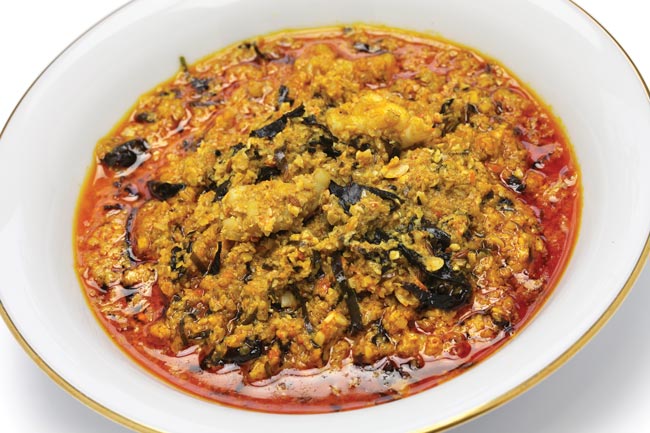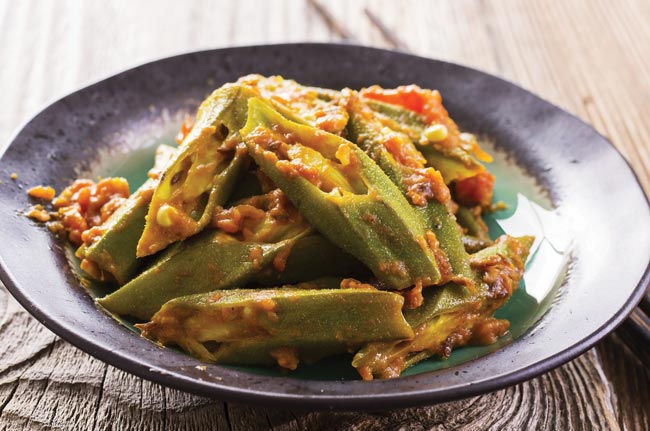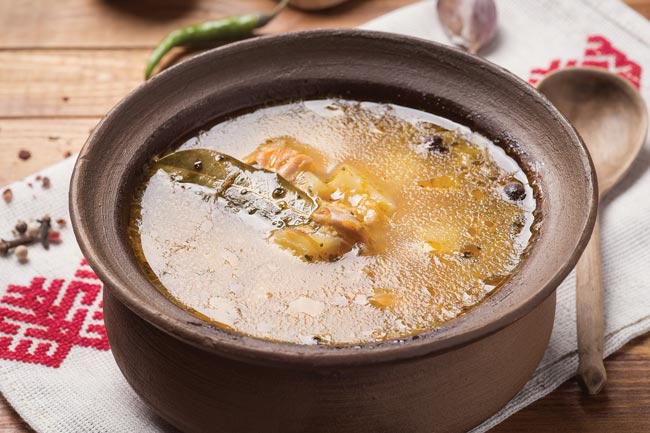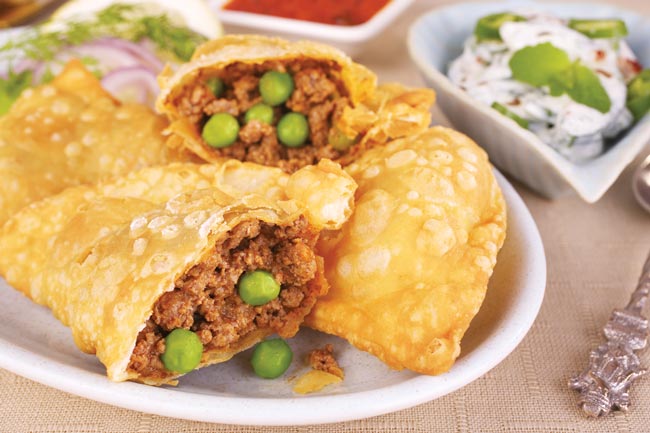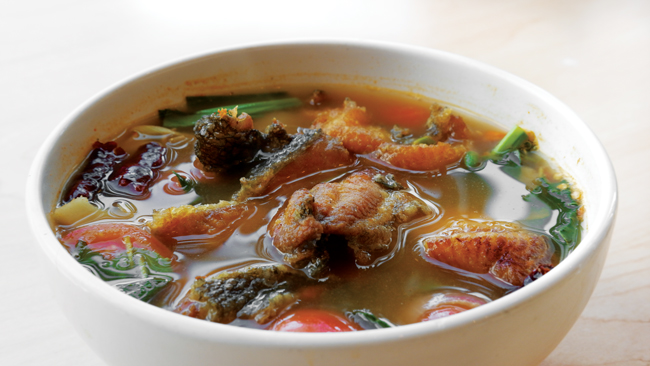Egusi soup
The Nigerian Egusi soup, prepared with melon seeds, is prepared by most tribes in Nigeria in many different ways. It is known as Miyan Gushi in Hausa, Ofe Egusi in Igbo and Efo Elegusi in Yoruba.
Egusi soup is also one of the most popular soups, if not the most popular for all Nigerians and non-Nigerians that like Nigerian fufu recipes.
The recipe detailed on this page is what I call the Caking Method of cooking Egusi Soup (the Egusi Before Oil method).
Other methods are:
Fried Egusi Soup: where the Egusi is fried in palm oil before other ingredients are added. I also call this one the Oil Before Egusi Method.
Akpuruakpu Egusi: where the ground Egusi is moulded into balls and cooked in the soup such that you will be eating the Egusi balls like meat while enjoying the meal. The surrounding Egusi in the soup is prepared using the caking method. Go check it out.
Ingredients
600g Egusi (Melon) seeds
2 cooking spoons red palm oil
Beef: Best cut and Shaki (cow tripe)
Fish: Dry Fish and Stock Fish
3 tablespoons ground crayfish
Pepper and Salt (to taste)
Vegetable: Nigerian pumpkin leaves, spinach or bitter leaves
3 small stock cubes
1 Ogiri Okpei (traditional locust bean seasoning: optional)
Cooking Instructions
Before preparing the soup, soak the dry fish for about half an hour. If you are using the very tough stock fish, boil it for 20 minutes and leave in the pot with the hot water to soak for about an hour. If using the softer stock fish, you can just soak them in cool water till you can break them apart with your hands. When the fish and stock fish are soft, debone and break them into sizeable chunks. Much closer to your cooking time, grind the Egusi with a dry mill. Grind the crayfish and the dry pepper separately and set aside. Wash the vegetable to be used. Cut into tiny pieces. Boil the shaki, stock fish and dry fish in 1 litre of water with the stock cubes till they are well done. First sign of a done shaki is that the cuts will start curling on itself. Wash the beef to be used for the soup, add it to the pot and cook on medium heat till done.
Caking Method
This method produces a healthier Egusi soup as there is no frying involved. It requires less oil too.
In this method, as soon as the shaki, fish and meat are done, remove them from the stock (water used in cooking the meat and fish) and place in a different pot or plate. Add the ground Egusi to the stock and stir. If the stock from cooking your meat and fish is not enough to give you a medium consistency, add some water to get the consistency of evaporated milk or a bit thicker. It will not be as smooth as evaporated milk though. Cover and cook till the Egusi cakes. Stir and add a little bit more water. Watch it closely so that it does not burn. Repeat step 3, adding only a small quantity of water at a time. After about 25 minutes, you will notice the clear Egusi oil coming to the surface of the soup. Add the red palm oil and bitter leaves (if it is your choice of vegetable), pepper and salt to taste and cook for about 7 minutes. You know it is good to continue when the palm oil and Egusi forms a good blend of light yellow colour. Add the cooked meat and fish. If using pumpkin leaves or any other soft vegetable, add it at this time and stir the soup. Add salt to your taste, stir and leave to simmer for 2 minutes maximum. Turn off the heat. Leave to stand for about 5 minutes before serving.
The Egusi soup is ready to be served with Garri (Eba), Semolina Fufu, Amala, Cassava Fufu or Pounded Yam.
Banku and Okra stew
Growing up, I was an okra stew fanatic. Whenever my mother made it, I could be continually counted on to eat to excess and then promptly fall into a food coma. I’ve cut back as I’ve grown older because okra stew made with palm oil isn’t the healthiest of dishes. Several chefs have attempted to adapt the recipe with vegetable oil to make it slightly healthier and reduce the cholesterol impact of the palm oil; however, I believe that the palm oil is essential to rich, deep flavour of the dish. I’m a okra stew purist, if you will. As such, these days, I only eat it sparingly, but relish those rare occasions.
If you do choose to adapt the recipe with vegetable oil, I suggest using poultry instead of beef or smoked meat as the flavour is slightly better.
Okra stew is a fascinating dish because of its many permutations across West Africa and its reinvention in the Americas as gumbo. Creole gumbo usually features a roux (a thickening agent made with a fat such as butter, mixed with flour) and is typically served over hot rice.
This recipe uses garden eggs, which are also called “African eggplants.” When I first arrived in Accra, I was very confused as to what exactly the pale yellow “garden eggs” were. After some inquiries, I learned that they are simply another variety of eggplant. In the States, if you’re lucky, you pay be able to find them at speciality African (and sometimes Asian) grocery stores. They’re slightly more bitter than the aubergine (dark purple) eggplants I am used to.
Ingredients
1Kg. shaki cow stomach
½Kg. kpomo of Cowskin
1 cup Callipo Tuna fish
½L. palm oil
4 yellow or red pepper, salt to taste
3 medium fresh tomato’s
400g. okra
2 large onions
4 garden eggs
250g. bitekuteku of nkontomire/ademe
1½Kg. banku mix
Cooking Instructions (6 persons)
- Wash and cut the meat into pieces, put into a sauce pan with a chopped onion and salt. Place on fire for about 10 minutes stirring occasionally.
- Wash the okra, garden eggs, tomatoes, pepper and the bitekuteku/nkontomire/ademe.
- Slice the onion, chop the tomato, okra and grind pepper and chop the nkontomire.
- Heat de oil and fry pomo of shaki until it is golden brown. Add sliced onions and stir for 5 minutes, add grounded pepper for few minutes and then chop tomatoes. Stir to avoid burning. Add de Callipo Tuna fish a few minutes later and keep on stirring. Add about 300 ml water to it then followed by the chop okroes and the leaves. Leave it to simmer for about 15 minutes.
- Serve with banku.
The banku mix has to mix with water and small salt in a deep sauce pan in a tick form and stir on fire with a wooden stick until it become very sticky for about 45 to 1 hour on fire. After it becomes sticky like bread mixture, try to make small balls of it and put them in a deep plate and serve it with your okra stew.
Pepper soup mix
Pepper soup, that most delightful of dishes capable of fighting off any cold, aches and pains, tiredness or just any bland, English rainy day… the possibilities are endless and a steamy, hot bowl of pepper soup is sure to keep any Nigerian man very happy indeed! Isn’t it strange therefore that I had never so much as attempted to make pepper soup before? The unfamiliar ingredients, the unusual scents… Time therefore to grab the bull by the horns and throw myself in the deep end.
Like Jollof rice, pepper soup comes in many varieties, comprising local spices and herbs depending on your tribe. It can be made with fish, beef, chicken, goat, offal, anything that tickles your man’s fancy, really. For those of you unfamiliar with some of the ingredients, here is my low down on the key ones.
Pepper soup mix
The main ingredient that gives the soup its distinctive flavour is of course pepper soup mix, which most shops sell ready-to-use.
While it is possible to grind your own spice, I struggled to find information on some of the ingredients, let alone finding them in a shop (Aziza and Ahuru seeds for example).
Herbs and spices
Ground Uda seed: a pungent and
aromatic spice with a bitter nutty taste. The seeds grow inside pods
on the ‘pepper tree’, an evergreen
in West Africa. Uda seeds can be
substituted by a mixture of half
pepper half nutmeg.
Utazi: a bitter-tasting pale green leaf that should only ever be used sparingly. It can be used as a substitute for bitter leaves.
Uziza: West African pepper from climbing vines native to central and West Africa. It gives the soup heat and a spicy, pungent aroma. Plus Pepper seed, Knorr powder, Aziza and Ahuru seeds.
Uziza leaves
These are the glossy leaves from the climbing vines that also give us Uziza seeds. The leaves have a spicy scent and a wonderful aroma.
FISH PEPPER SOUP RECIPE
I am a fan of crispy skin but otherwise prefer fish without the skin. I have incorporated this in the recipe below, perhaps ‘westernising’ it a little, but if you prefer to leave the skin on then just leave the fish in the pot.
Ingredients
200g. yam
1 large onion, chopped
1 tbsp. oil
1 Tilapia (or other firm flesh fish;
Sea Bream, Red Snapper, Catfish)
1 tbsp. pepper soup spice mix
1 Scotch Bonnet pepper, finely chopped or 1 tbsp. dried African hot pepper 500 ml water
1-2 Bigi Mama cubes
1 tbsp. dried Uziza leaves
1 tbsp. ground crayfish
Salt to taste
Cooking Instructions
- First, slice, peel and cut the yam into large chunks. Bring them to
a boil in a pot with a little salt until cooked. This should take 15 minutes or so. Drain and set aside. - In another pot, heat the oil and soften the onions for 5 minutes on a low heat.
- In the meantime, wash and cut the fish into steak-like chunks of about 1” wide. Add to the softened onions, together with the water and Knorr stock cubes. Bring to a boil and simmer for 5 minutes until the fish is cooked. With a slotted spoon, take the fish out and remove the skin. Set aside.
- Add the pepper soup mix, chopped Scotch Bonnet (or dried African pepper), and ground crayfish to the liquid and cook for a further 5 minutes.
- Then add the Uziza leaves, boiled yam and cooked fish and heat through for another five minutes before serving.
Tuna Samosas
Perhaps, you may have already ordered the turkey, but if you have people coming around you will need to have some small chops ready as well! I was recently introduced to Callipo Tuna, a huge can that can easily feed my family of four, and it’s perfect for tuna samosas. I had never made samosas before, but I was pleasantly surprised: it was fairly easy, fun even, and the result was delicious!
It went down a treat with my (sometimes fussy) children, so what more does a mum want, right? I combined it with some President fried rice for a proper meal, but will be making the samosas again as small chops for the holidays.
Ingredients
Callipo Tuna samosas
½ tin Callipo Tuna, drained
1 medium onion, finely chopped
1 red pepper, finely chopped
½ Scotch bonnet pepper, finely chopped
100g. garden peas
Samosas dough
250g. plain flour
100g. self raising flour
85g. butter
A little warm water
Cooking Instructions
- Heat a little oil in a pot and fry the onions on a medium heat for 3 minutes. Add the chopped red pepper, Scotch bonnet and garden peas. Set aside to cool down.
- For the samosas dough, mix the plain flour, self-raising flour and butter together. Add a splash of warm water and combine to get stretchy dough. Keep adding a little more water as necessary until you achieve the right consistency.
- Divide the dough into 8 small balls and roll each out into a circle. Cut each into half to get 16 half-circles.
- Add the Callipo Tuna to the cooled vegetable mixture and season with salt and pepper to taste.
- Add a small tablespoon of the filling to the middle of one semi-circle. Using your finger, brush a little water along the edges that need to be joined. Fold the samosa into a triangle and close-up the edges. Repeat this until you’ve used up all the dough and filling.
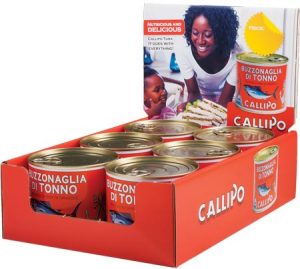
- Heat oil in a pot and gently fry the samosas until golden brown. Be careful not to overheat the oil, as the samosa will burst open. Lift out with a slotted spoon and drain on a kitchen towel.
- Enjoy as a light snack or alongside fried rice.
Catfish Pepper Soup should always be served hot. It can be eaten alone with a chilled drink. I love to eat it with Agidi, Boiled White Rice or Boiled Yam.
Catfish pepper Soup
Nigerian Catfish Pepper Soup (popularly known as Point & Kill) is that Nigerian pepper soup that is usually eaten in exclusive Nigerian bars and restaurants. Even if you can get Nigerian Pepper Soup in any road side restaurant, you’ll need to dig deep to find restaurants where you can have the correct Point & Kill. So why is it called Point & Kill? LOL Usually when a group of guests arrive at these exclusive bars and order Catfish Pepper Soup, at least one of the group will need to go to a big bowl where some live catfish are swimming around and point out a catfish. The catfish will then be killed in the guest’s presence and taken away for preparation. So you see; you point and it is killed for you!
Ingredients
500g. Cat Fish
4 Ehu or Ariwo or Calabash Nutmeg seeds
Habanero Pepper or chilli pepper
(to taste)
A few scent leaves
2 medium onions
Salt (to taste)
2 big stock cubes
Cooking Instructions
- To prepare Cat Fish Pepper Soup, wash and cut the cat fish into 1-inch thick slices. Boil some hot water and pour on the pieces of fish, stir and remove immediately. This toughens the skin of the fish so that it does not fall apart during cooking.
- Now it is time to prepare the ‘secret’ ingredient. Using an old frying pan, roast the Ehu seeds (stirring constantly) till you can smell it. Don’t worry you will know when it is OK to take it off because it has a distinctive aroma. Another way to know that it is okay is to take one of the seeds and try to remove the outer membrane. If the membrane comes off easily, then the Ehu is done.
- Peel off the membrane from all the Ehu seeds and grind with a dry mill.
Cut the onions into tiny pieces.
Wash and pick the scent leaves and tear them up with your fingers into small pieces. - Place the pieces of fish in a pot and pour water to just cover the fish, add the stock cubes and bring to the boil.
- Once it starts to boil add the ground ehu, onions, habanero pepper and scent leaves and continue cooking.
- Once the catfish is done, add salt to taste and leave to simmer for about 5 minutes and it’s ready!
- Plate it all up and enjoy!
Catfish Pepper Soup should always be served hot. It can be eaten alone with a chilled drink. I love to eat it with Agidi, Boiled White Rice or Boiled Yam.

